Muse is the return to fine dining of Tom Aikens, one of the more interesting chefs on the British culinary scene. Having worked at some serious restaurants including La Tante Claire and the legendary Jamin in Paris, Tom kept two Michelin stars for Pied a Terre before being fired in controversial circumstances involving a hot palette knife and a commis chef, to the detriment of the latter.
Mr Aikens struck out on his own in 2003 in Elystan Street and cooked some fine, elaborate food that only ever gained one Michelin star, which struck me as distinctly mean on the part of Michelin, especially when you consider some of the places they freely dole out two stars to these days. Tom Aikens eponymous restaurant closed, again controversially, but this time no commis chefs were harmed, merely suppliers. The restaurant folded up in October 2008 leaving a million pounds of unpaid bills to 160 unsuspecting suppliers. What was particularly galling to those creditors was that the business closed via one of those City of London three card trick style deals whereby the restaurant shut for a moment and was instantly sold back to Tom and some venture capitalists. It and its casual sister restaurant continued trading, yet the £3 million debt that the company had disappeared in a puff of smoke faster than a venture capitalist’s Lamborghini. Not a single service was missed.
The restaurant closed in 2014 for good, and Mr AIkens focused on Tom’s Kitchen, a more casual concept, with five branches operating at its peak. Eventually this ceased operations at the end of 2019. Out of the ashes, Muse has risen like a phoenix. It opened in January 2020 in Belgravia, proudly listing its suppliers on its website. Presumably they nervously check the Dun and Bradstreet risk rating of the new Aikens venture each day. As Woody Allen once wrote: “...and the lion will lie down with the lamb, but the lamb won’t get much sleep”.
Muse has a discreet entrance in a quiet side street, indeed so discreet that there was no sign above the door. On the ground floor is a waiting area and bar, with the dining room a floor up. About two dozen diners can be seated in the cosy space, with the tables and seats quite tightly packed. You can see the activity in the open kitchen, with half a dozen counter seats as well as the regular tables. Muse offered a six-course tasting menu available at £95 at both lunch and dinner. At lunch there was also a shorter three course menu at £50 and also a longer ten course tasting menu at £145. There were no pesky quotidian menu descriptions of ingredients and techniques, but in its place were evocative terms for each dish like “The Love Affair Continues”, drawing on experiences from Tom’s life.
The fairly short wine list, two-thirds French, had 55 labels and ranged in price from £39 to £330, with a median price of £84 and an average markup to retail price of 2.9 times, which is not exactly cheap, but by current London standards seems positively restrained. Sample references were Mâcon-Villages Domaine Aléxis Pollier 2017 at £45 for a bottle that you can find in the high street for £12, at Domaine Marc Tempé Riesling Zellenberg 2016 at £64 compared to its retail price of £24, and Mount Jefferson Pinot Noir Cristom Vineyards 2017 at £84 for a wine that will set you back £32 in the high street. For those with the means there was Charmes-Chambertin Grand Cru Domaine Confuron-Cotetidot 2013 at £315 compared to its retail price of £145, and Krug NV champagne at £330 for a wine whose current market value is £178. Corkage was £50 a bottle.
Our meal began with some canapes. A little pot contained milk cured with chestnut cream, fresh chestnuts and chestnut sauce, topped with almond crumble. This was lovely, with excellent flavour balance. Alongside this was venison tartare with juniper salt oil, herb emulsion and hazelnut emulsion, which was pleasant though for me could have done with more seasoning. This was followed by cep tart on malt pastry, which had delicate pastry and plenty of forest flavour from the ceps. Then came a dish of “cheese biscuits”, featuring Berkswell ewe milk cheese mousse and a coating of sorrel, which was a very enjoyable blend of textures and flavours (17/20 nibbles).
The next course was less successful. Raw milk and cream from Norfolk was used to make ricotta, served with burnt leek purée alongside fresh ricotta with honey jelly, olive oil jelly, black truffle from Italy, leek crisp made with ricotta whey, burnt leek vinaigrette and powder. The burnt leek worked well, but for me there was too much ricotta and not enough leek, the overall effect having too much dairy flavour (barely 14/20).
At this point we were served bread, which was made from scratch in the kitchen using a sourdough starter that the chef has kept alive for six years, with the flour being ground on site. Flour and treacle was added to the dough and the end result was superb, with a crisp crust and light texture, served warm. This was glorious bread, with a fine crust and airy texture, served with two different butters, one a conventional one from Norfolk, the other flavoured with chcken (18/20). The next course was crab with bacon, a quite original combination. Crab jelly and white crab meat was combined with bacon cream and samphire. The overall effect was lovely, the smoky flavour note of the bacon balancing the natural sweetness of the crab, the mix of textures working well (18/20).
The next dish was based on cauliflower, prepared in assorted ways. Cauliflower panna cotta lacked much flavour, and was served with cauliflower ice cream, cauliflower couscous, pickled cauliflower with pickled gold raisins, verjus gel, cauliflower oil, cauliflower and mace sauce and caviar. Although there was reasonable acidity, this dish did not work that well for me, the overall effect being surprisingly bland. This dish would be improved if the restaurant upgraded its caviar supplier. The Exmoor caviar had little flavour, and it would be interesting to see this dish made with some top end caviar from a supplier like N25 or Kings Caviar. I would also like to have seen more sharpness from the pickled cauliflower (14/20).
This was followed by a beetroot dish, the core ingredient supplied by a Norfolk farm. Three different beetroot variants appeared: purple, golden and candied. The beetroot was served pickled, raw and salt baked, along with smoked beet yoghurt, pickled balls of cucumber, cucumber and black pepper jelly, beetroot consommé and a fresh blood orange and blood orange purée. This was a clever dish, the different flavours and textures having excellent balance, the vinegar from the pickling nicely balancing the cucumber, and with just a touch of bite from the pepper (easily 17/20).
This was followed by a dish in two stages, based around langoustine. A langoustine tail was braised in Armagnac, grilled with pig trotter jus and served with lardo Colonnata, apple purée (using a mix of Pink Lady and Granny Smith) that was slightly burnt and infused with rosemary. On the side was a savoury langoustine custard with ragout of artichoke and fennel, langoustine claw meat and langoustine foam. The tail was very good, being lightly cooked and combining well with the pork flavour, but the star was the langoustine custard, which had great depth of flavour (18/20).
Next was turbot from a large 6kg fish, poached in duck fat and served with rich buttery mash flavoured with milk and hay, duck sausage and a jus made from the turbot bones as well as duck bones, garlic, sea snails and parsley velouté. This was a good dish, though for me the turbot could have been cooked a fraction less. However the mash was excellent and the sauce was gorgeous, with deep flavour (16/20).
The meat course featured sirloin of beef from Fenn farm in Suffolk. This was from a retired dairy cow of 8-10 years in age and hung for 4-5 weeks. It was char- grilled, served with beef brisket that had been braised and fried with onion ash, fermented grains and minced beef wrapped in onion, all with a red wine sauce using the beef tendons. On the side was a large steamed and fried chip with onion ketchup. This was nice enough, especially the minced beef in onion, but the sirloin itself was a touch tougher than I would have liked. Perhaps I have been spending too much time in Japan eating silky wagyu (16/20).
Poached rhubarb was flavoured with rose, limoncello and frozen buttermilk and was a pleasant pre-dessert, though after the high level of effort in some of the previous dishes this felt like a bit of a throw away dish (15/20). Dessert was “Cows and cornflakes”, and involved popcorn and hay parfait, popcorn ice cream, caramelised cornflake praline and malt crumb. I am not usually a fan of such modern desserts, but this worked really well, the blend of textures and balance of savoury and sweet combining to excellent effect (17/20).
Coffee was from Difference Coffee. Service was lovely, the staff seeming enthusiastic and engaged. The bill came to £268 per person, involving substantial corkage on our part. If you went for the short three course menu and shared a modest bottle of wine then a more typical cost per person might be around £95. Although this was early days for Muse, there were some impressive dishes. There was some inconsistency, as inevitably occurs in a lengthy menu, but the level of cooking here is high. It is certainly one of the best openings in London for some time. Tom Aikens has always been a gifted chef, and it is good to see him back behind the stoves showing off his undoubted talent.




















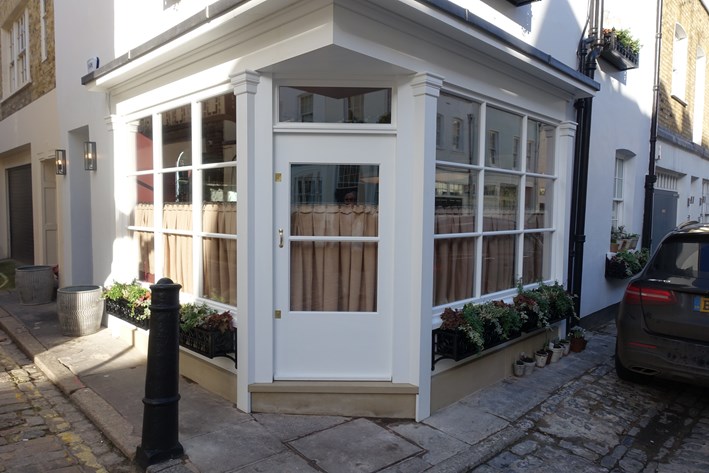

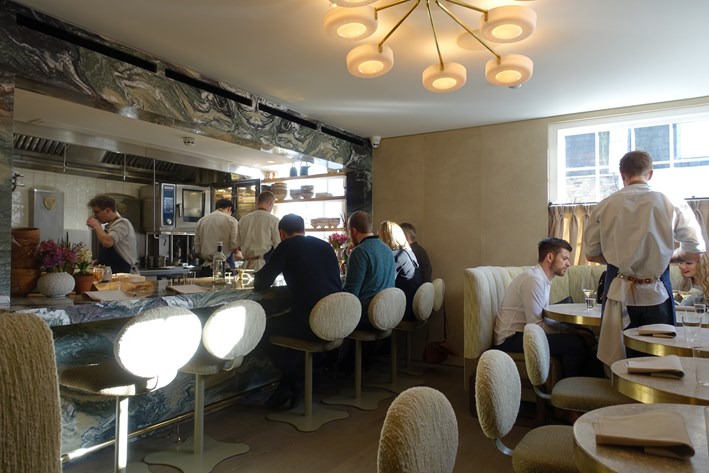
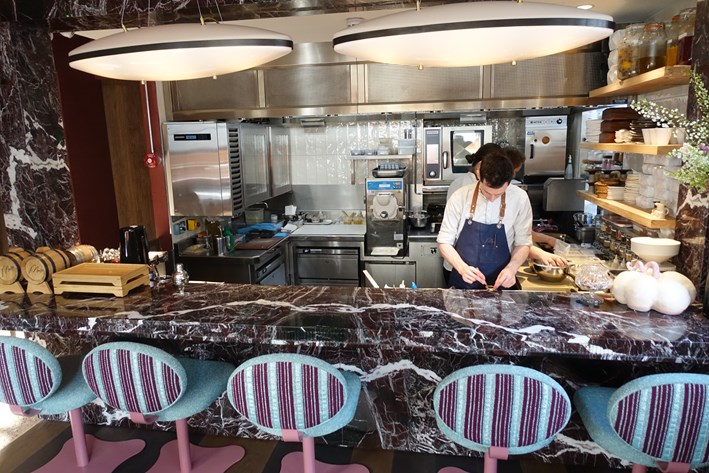
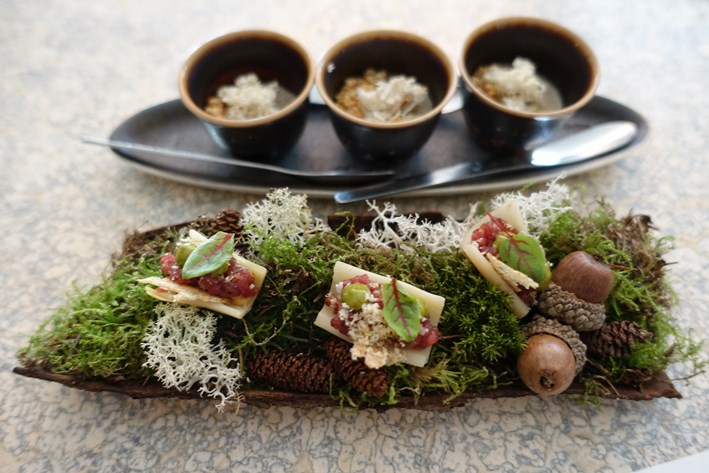
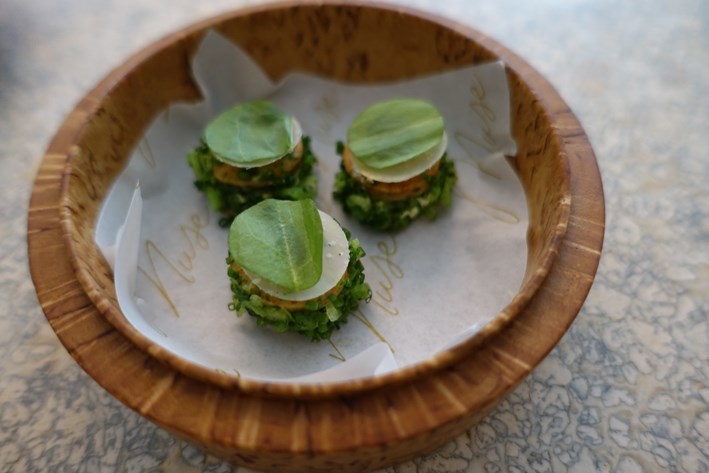
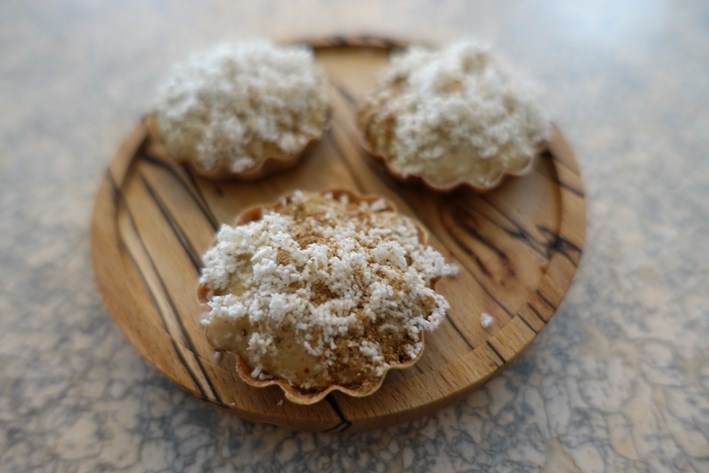

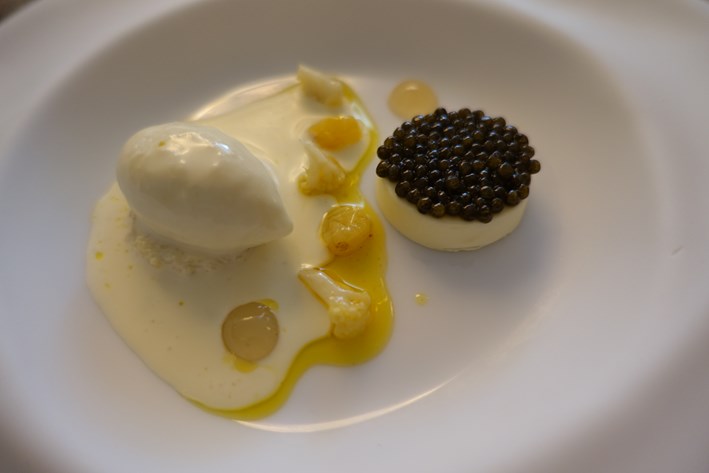
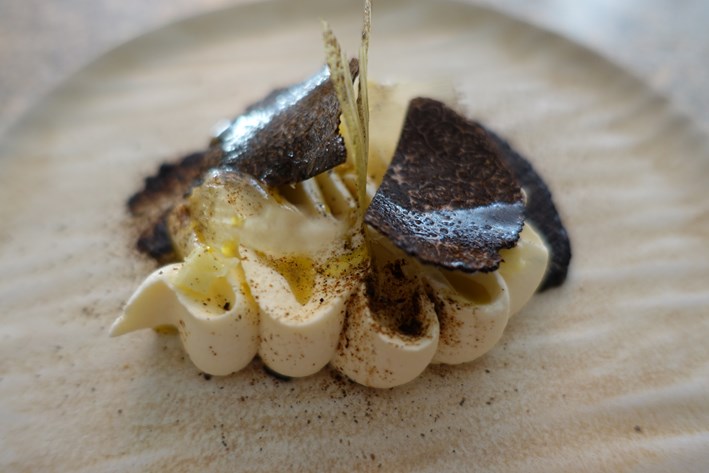
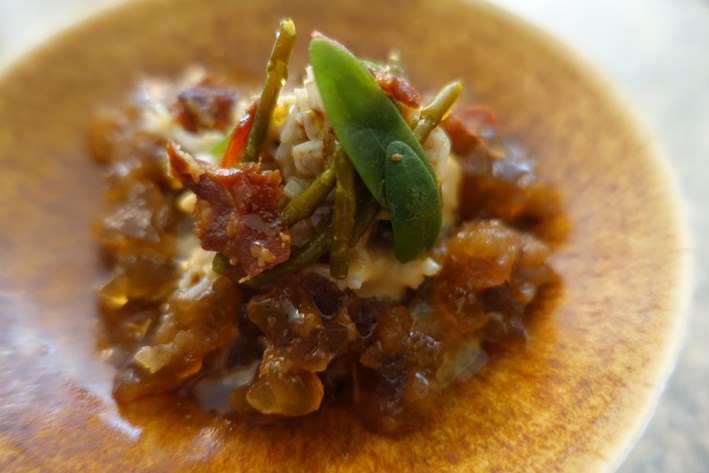
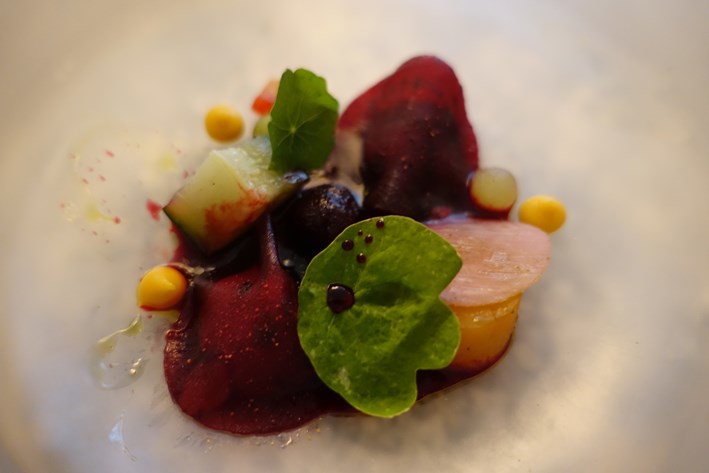
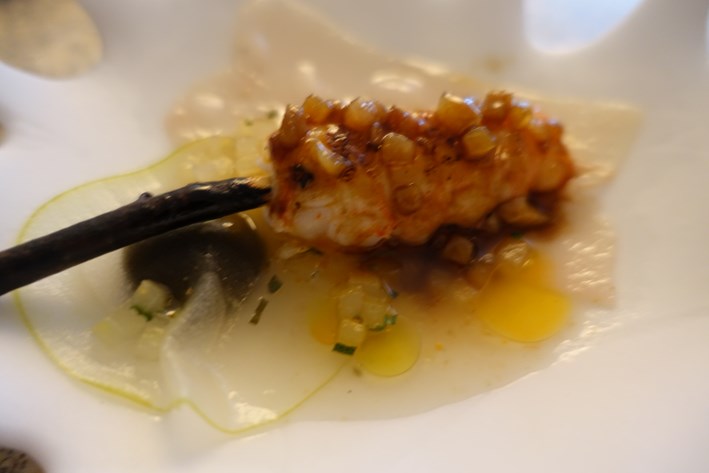
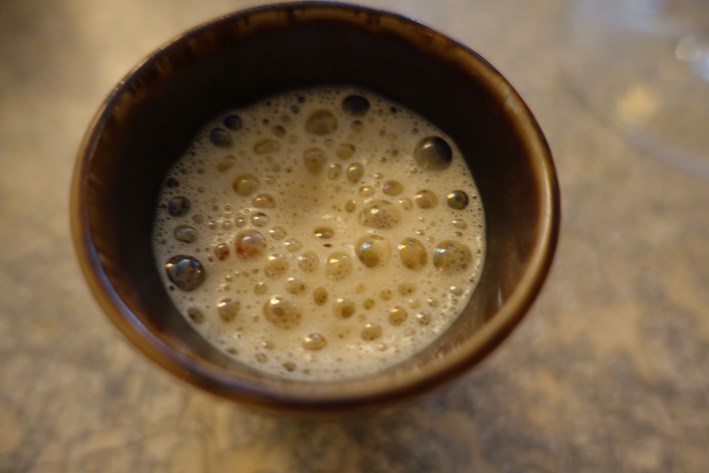
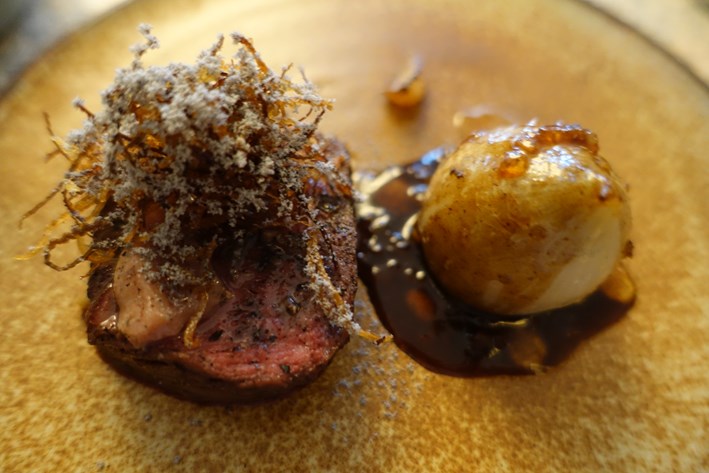

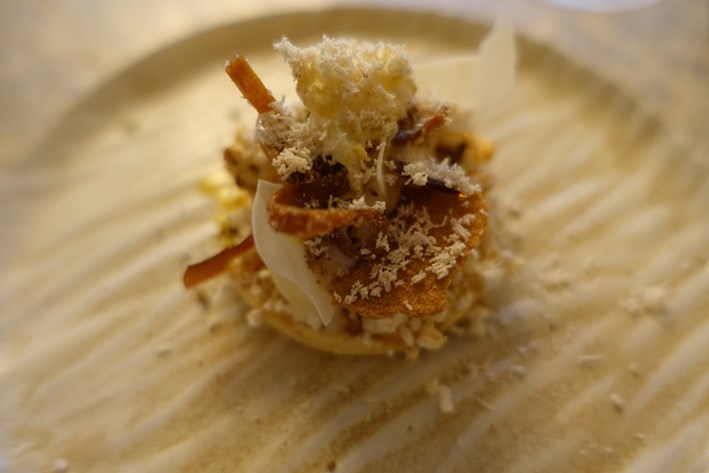
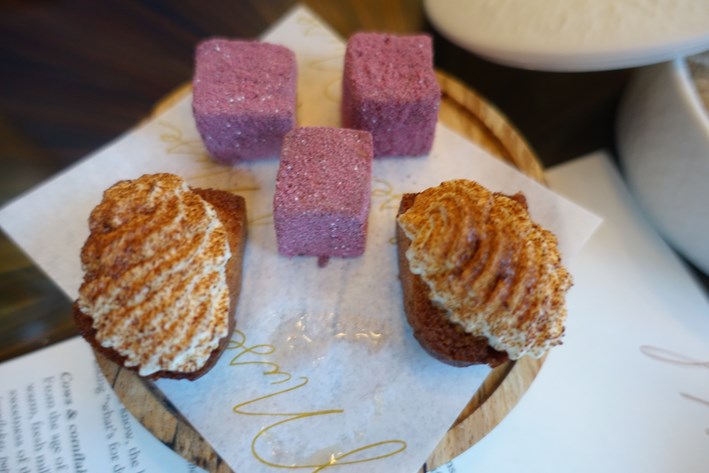
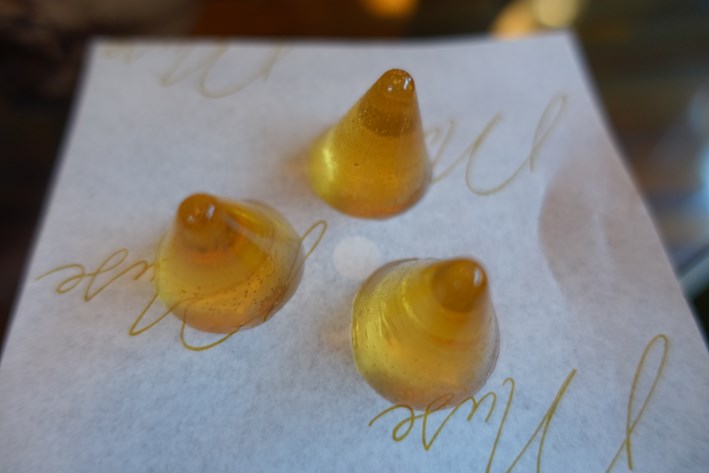

Edesia
"Tom, whats with all this cod thats being delivered? We dont even have it on the menu yet every supplier has it on their bill of delivery" "Um, thats Cash On Delivery"